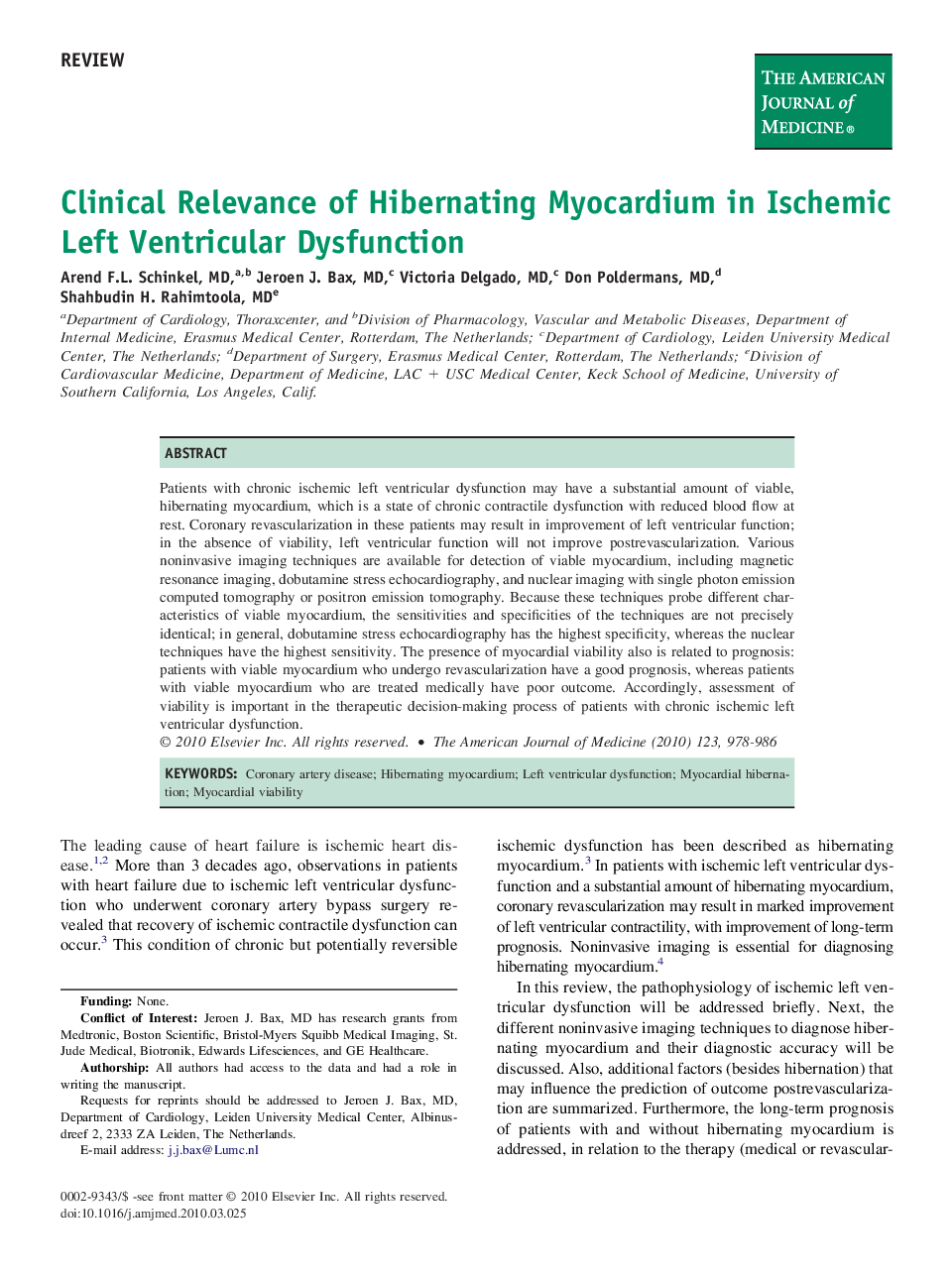| Article ID | Journal | Published Year | Pages | File Type |
|---|---|---|---|---|
| 2719902 | The American Journal of Medicine | 2010 | 9 Pages |
Patients with chronic ischemic left ventricular dysfunction may have a substantial amount of viable, hibernating myocardium, which is a state of chronic contractile dysfunction with reduced blood flow at rest. Coronary revascularization in these patients may result in improvement of left ventricular function; in the absence of viability, left ventricular function will not improve postrevascularization. Various noninvasive imaging techniques are available for detection of viable myocardium, including magnetic resonance imaging, dobutamine stress echocardiography, and nuclear imaging with single photon emission computed tomography or positron emission tomography. Because these techniques probe different characteristics of viable myocardium, the sensitivities and specificities of the techniques are not precisely identical; in general, dobutamine stress echocardiography has the highest specificity, whereas the nuclear techniques have the highest sensitivity. The presence of myocardial viability also is related to prognosis: patients with viable myocardium who undergo revascularization have a good prognosis, whereas patients with viable myocardium who are treated medically have poor outcome. Accordingly, assessment of viability is important in the therapeutic decision-making process of patients with chronic ischemic left ventricular dysfunction.
